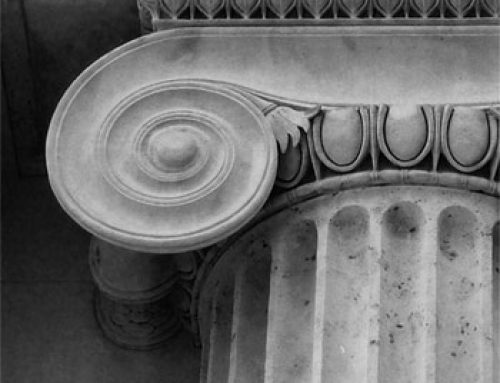Summary Jury Trials a/k/a Fast Track Trials in South Carolina
A summary jury trial is a method of alternative dispute resolution frequently used in South Carolina. This article explains how a summary jury trial is conducted and how it differs in several important respects from a traditional jury trial.
Summary Jury Trials
What is a summary jury trial ?
A summary jury trial, also known as a “fast-track” trial, is a voluntary proceeding available in the Court of Common Pleas. A summary jury case starts out as a regular case on the Court of Common Pleas’ general jury docket. At some point while the case is pending on the general docket, however, the parties reach an agreement to resolve the case through a summary jury trial. All parties to the lawsuit must consent to try the case by way of a summary jury proceeding. Upon the parties reaching that agreement, the Court will take the case off the general docket and await further word from the parties as to when they wish to schedule the summary jury trial. When they are ready to try the case, the parties contact the Clerk’s office and will be advised of upcoming terms of court during which the Court could schedule the trial. The parties then pick one of those terms, and they can also usually choose the exact date on which they would like to start the trial during the chosen term. This ability to pick a “date certain” for trial is a big attraction for parties considering a summary jury trial, as it makes it much easier to schedule the attendance of witnesses at trial, reduces the chance of scheduling conflicts for the attorneys, and otherwise helps to eliminate surprises that might be encountered if the case is on the regular roster and is called to trial at an unexpected or inconvenient time.
While an ordinary Common Pleas jury case is decided by a twelve person jury, a summary trial is conducted before a six person jury. The summary jury is selected from the same pool of jurors called to hear standard Common Pleas cases. A Circuit Court Judge presides over the selection of the jury for the summary jury trial. After the jury pool as a whole has been qualified, the Judge will have the court clerk draw up a list of ten potential jurors for the summary jury proceeding. Each side to the summary proceeding will then be allowed to strike two jurors from that list, leaving six jurors remaining to serve as the summary jury.
Once the jury has been selected, the Circuit Court Judge has no further involvement in the summary jury proceeding. The judge who presides over the trial in a summary proceeding is a private attorney mutually chosen by the parties. The attorney serving as the summary judge generally conducts the case in the same manner as would a Circuit Court Judge, following the same types of formalities and procedures. Ordinarily, the summary jury judge will offer a brief explanation to the jury about what a summary jury trial is and how the trial will be conducted, while being careful to avoid giving the jury the impression that the summary jury trial is somehow not a real or important proceeding because it is different from a standard jury trial.
Although the general format of the summary jury trial is the same as in a standard jury case, one way that it can differ substantially is that the parties often agree to allow in evidence that would otherwise be inadmissible under the rules. For example, instead of having doctors or other experts appear to testify at trial live or by a video deposition, often at great cost, the parties to a summary jury trial may agree to simply introduce the expert’s records or reports in lieu of live testimony, or even present their own summaries as to what the expert would have said if they had been called to testify. By mutually allowing a “bending” and streamlining of the rules of evidence, the parties can not only substantially reduce their discovery and trial costs, but also dramatically reduce the time it takes to try the case. This is one of the strong incentives for trying the case via a summary jury trial.
The cost savings from streamlining discovery and the trial are somewhat offset by the fact that the parties will need to pay the fees of the summary judge. Those fees are normally split evenly between the parties. Even accounting for those fees, the parties will still likely incur substantially lower total costs by trying the case via a summary proceeding as compared to a standard jury trial.
Use of high-low caps in summary jury trials.
The parties in a summary jury proceeding almost always agree that high-low caps will be applied to the jury’s verdict. For example, they may agree that the Plaintiff will be guaranteed to recover no less than $10,000.00, and that the Defendant’s liability will not exceed $50,000.00, regardless of how high or low the verdict might be. In that example, if the summary jury found in favor of the Defendant, the Plaintiff would still receive $10,000.00 because of the low-end cap. If on the other hand, the jury awarded the Plaintiff $75,000.00, the high-end cap would kick in and the Defendant would only be required to pay $50,000.00 to the Plaintiff. High-low caps are attractive to both sides, as they avoid having the Plaintiff walk away empty-handed even if the trial goes badly, while protecting the Defendant from the potential of a runaway verdict. The jury is not informed of the presence of the high-low agreement, in order to allow the members of the jury to fairly and independently assess what they believe to be the true value of the case. Only after the verdict is rendered do the parties reveal the high-low caps to the summary judge. Of course, in a case where the jury’s verdict falls between the high-low figures (i.e. is greater than the low but less than the high), there is no need to apply a cap and the verdict is allowed to stand as rendered. There is no right of appeal from the verdict.
No judgment is recorded in a summary jury proceeding
The summary jury’s verdict is not reduced to a judgment by the summary judge. The judge will pass along the verdict form for recording with the Clerk’s office, and the verdict amount will be paid subject to the caps. The Plaintiff will ordinarily be required to sign a general release in return for the payment, and a stipulation of dismissal with prejudice will then be filed with the Clerk’s office, ending the case.
The written agreement for a summary jury proceeding
The parties should carefully prepare a written agreement outlining the terms under which they will proceed with a summary jury trial. Among the terms which should be included are the trial date (usually expressed as “on or before”), the identity of the summary judge, how the fees of the summary judge are to be paid, any exceptions to evidentiary or procedural rules that will apply during discovery or at trial, what powers the summary judge will have at trial, the high-low caps agreed to by the parties, the fact that a judgment will not be recorded and that no appeal will be allowed, and whether a release will be signed post-verdict and in what form.
Enumerating the powers of the summary jury judge is important in order to avoid potentially messy results at trial. By way of example, suppose the jury finds in favor of the Plaintiff, but awards the Plaintiff only nominal damages of $100.00. In an ordinary jury case, the Plaintiff could file a motion for additur, asking the Judge to consider increasing the award. In a summary jury proceeding, however, the parties will likely want to preclude the judge from having any power to alter the verdict amount, either by raising or lowering it, as such power may effectively negate the benefit of the high-low caps and defeat the purpose of letting the jury “put a number” on the case. For that same reason, the parties will most probably want to prohibit the summary jury judge from having any power to grant a new trial on any ground. While a good argument can be made that only a Circuit Court Judge (and not a summary jury judge) would have such powers to begin with, it is best to avoid getting entangled in such sticky issues by expressly spelling out what powers the summary jury judge will or won’t have at trial. One power the parties likely will want to grant the summary judge is the power to grant a mistrial in certain circumstances. Without the threat of a potential mistrial being called by the summary jury judge, one of the parties may decide to loosely adhere to or outright violate the evidentiary and procedural rules agreed to by the parties, thereby causing substantial harm and prejudice to the other side.
Share This Story, Choose Your Platform!









Leave A Comment